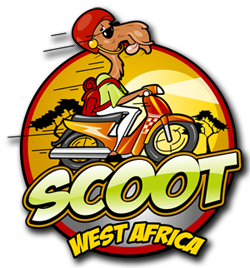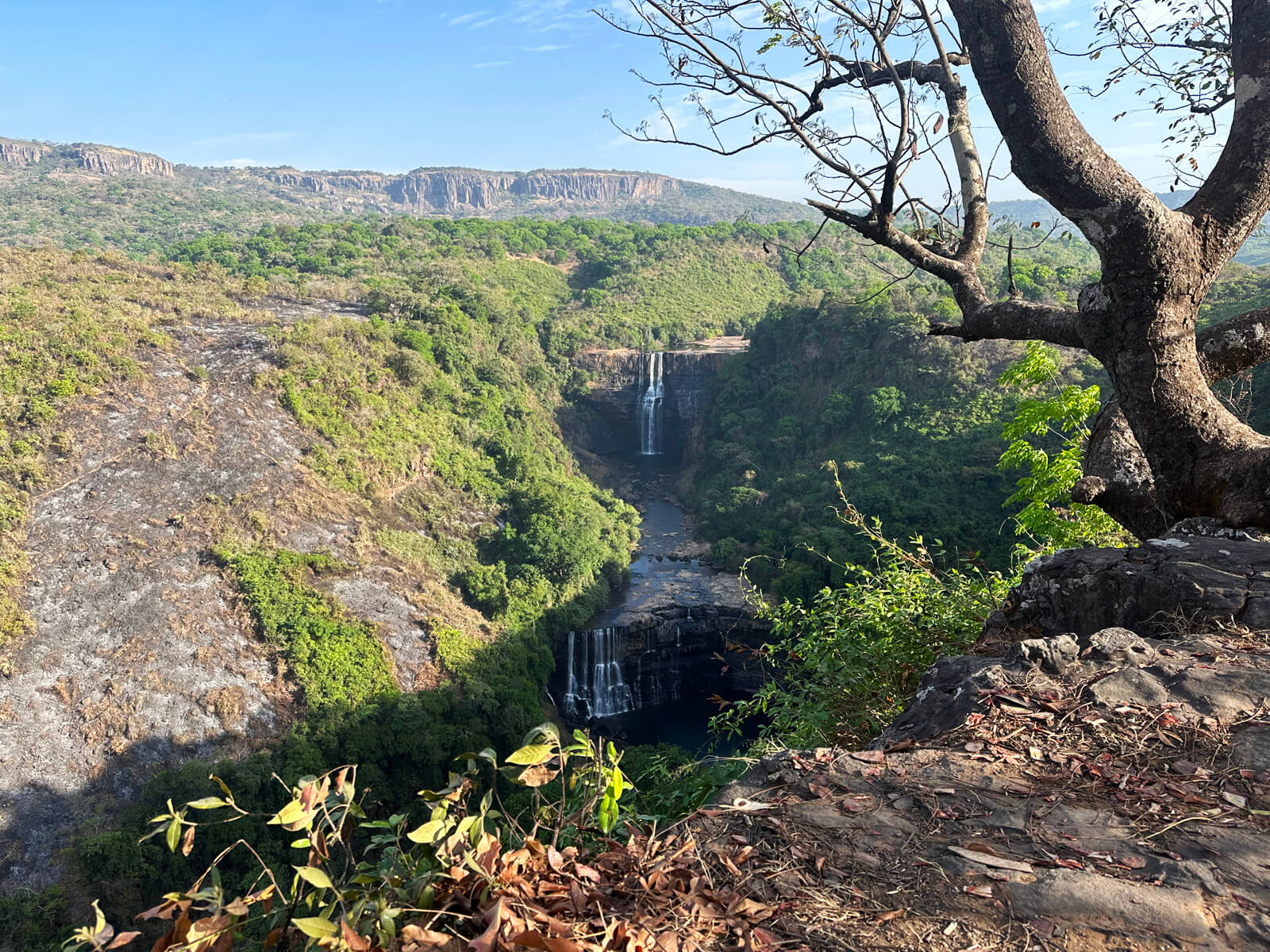A challenging and unpredicatable ride from Bissau to Senegal via the Fouta Djallon of Guinea, the so-called Water Tower of West Africa — an expansive region of mind-bending scenery. This is a 4-country trip that allows us to explore vibrant lusophone Guinea-Bissau before discovering the wonder of the Guinean highlands. Endless gorges and canyons, waterfalls, and some of the only mountains in West Africa. We will wrap up the trip by traveling the length of The Gambia before dipping back into Senegal and finishing with a sunset on the Atlantic.
Itinerary
Please see our philosophy on itineraries. This itinerary is flexible and not necessarily chronological. Changes can be made depending on local conditions, spontaneous discoveries that can happen on the road, and the considerations of the group. Instead of a day-by-day breakdown we will share some of the highlights of the trip and then explain what to expect in terms of weather, food, lodging etc.
2024 Trip Update: There has already been a significant adjustment – we would call it an upgrade – to this trip. Instead of a two week trip that starts and ends in Bissau, it is now a two and a half week trip that starts in Bissau and ends in Senegal. We will cover 4 countries in total (Guinea-Bissau, Guinea, Senegal and The Gambia) and without a doubt, it will be our most adventurous trip outside of the Coast to Coast.
Bissau
One of West Africa’s smaller capital cities, Bissau doesn’t make it onto many itineraries. That’s a shame. While you won’t find any big ticket bucket list items here, you will find a charming and highly walkable town that is simultaneously lively and relaxed. It may be the only place in the world where you can order a caipirinha from a roadside stand at a traffic circle across from the Presidential Palace.
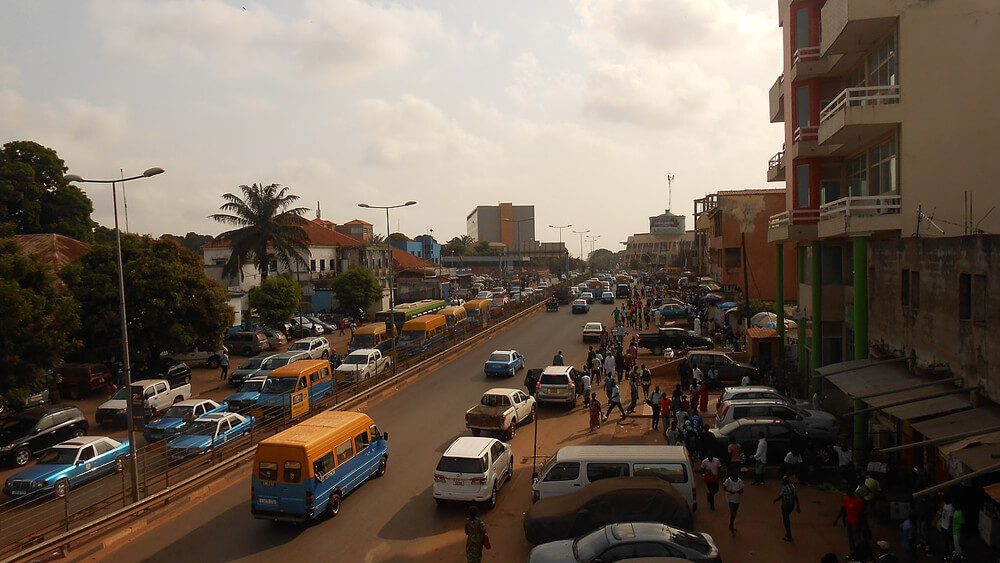
We will be staying near the old city of Bissau, with its decaying and unexpectedly beautiful buildings from the Portuguese colonial period. Depending on when you arrive, there is an optional city tour, which will include the artisanal market, but you may want to just relax at the hotel as we prepare to set out on what will be a serious expedition.
Southern Guinea-Bissau
We will start our journey in Bissau with one of many boat trips, crossing the channel where the Corubal River opens up to the Atlantic Ocean and making our way to the town of Enxudé. Once there, we will hop on the bikes and head into the Cufado Lagoons National Park. The terrain will be mixed, but we will largely be off the tarmac as we cruise through the forest to the town of Buba.
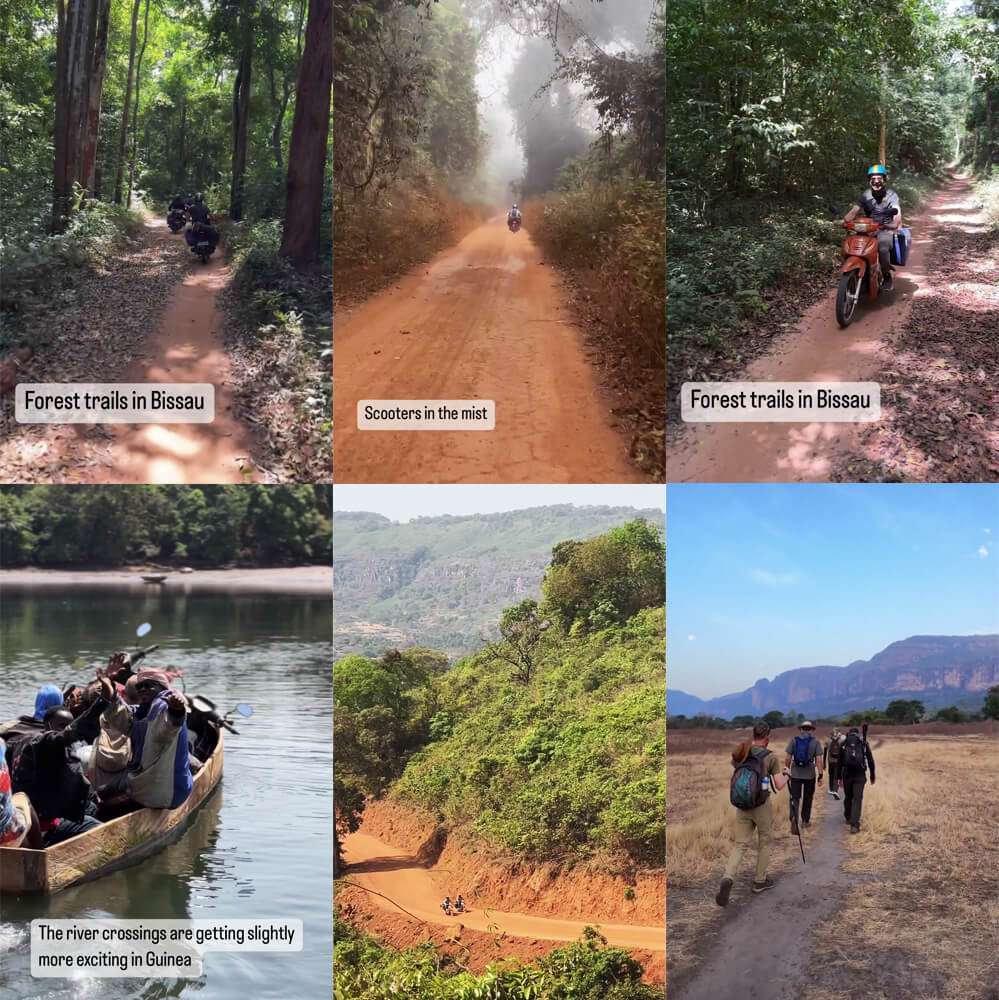
There will be sundowners next to the river in Buba as we plot out the days of challenging riding that lie ahead of us. The following morning we will set off towards the southeastern corner of Guinea-Bissau. We will once more have varied terrain as we head to a national park that has one of the very few wild chimpanzee populations in West Africa. We will do some trekking here in the hopes of spotting these critically endangered animals.
Crossing into Guinea
When you look at the map, you will see that the N3 national highway crosses from Guinea-Bissau into Guinea. This is not a typical highway. There are parts of it that could hardly be considered a road. At times, this national highway is barely wide enough for a motorbike. At times, the N3 disappears entirely and we need to put the bikes into a pirogue to cross a river. The ride is challenging. The ride is fun.
For some, this will be an adventure like they have never experienced.
After crossing the border, we will have a particularly difficult ride to Boke, our first major town in Guinea. We will take it slow. In fact, taking it slow is the only option if you want to keep the bike in one piece. The ride is challenging. The ride may or may not be fun. But our next stop will be one of those magical West African beaches where we can wash away the dust with cold drinks and an ocean to ourselves.
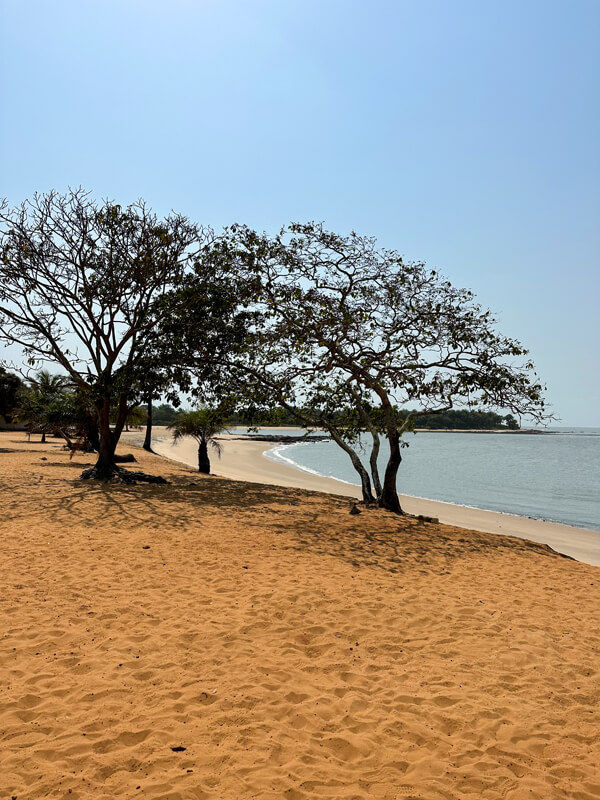
The Highlands of Guinea
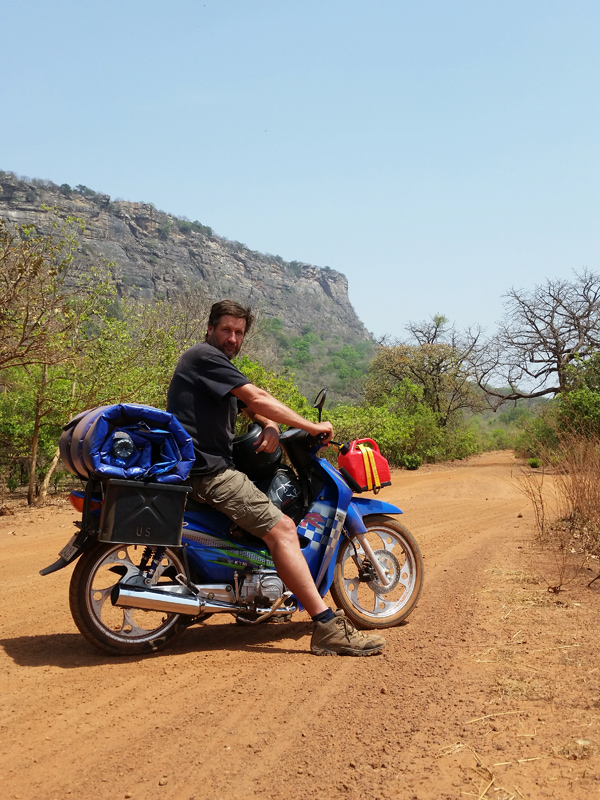
After relaxing at the beach we will blast north to the Highlands. Once again, all bets are off. Road conditions may change without warning. Like the N3, the road can at times disappear entirely. This region of Guinea is known for its rich history, culture and extraordinary natural beauty. It is less known for its infrastructure.
We will bush camp more often than not in the Highlands and into the Fouta Djallon. I don’t know about you, but we are happy to part with a real bed in exchange for this:
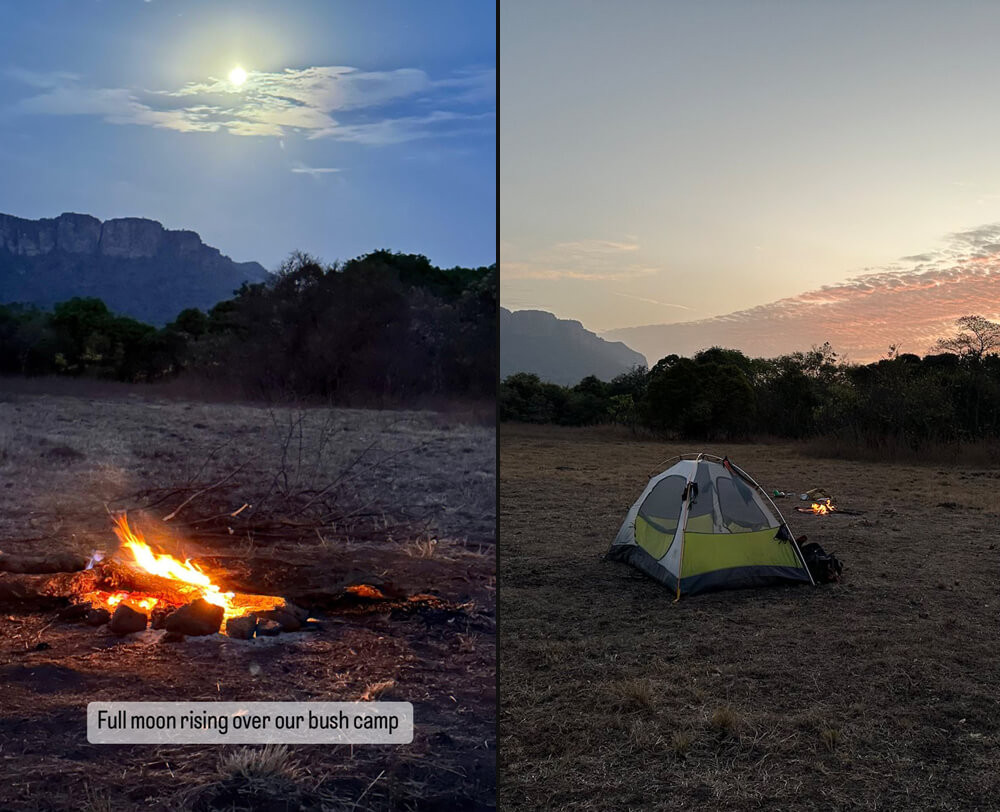
Did we mention the road conditions may change without warning?
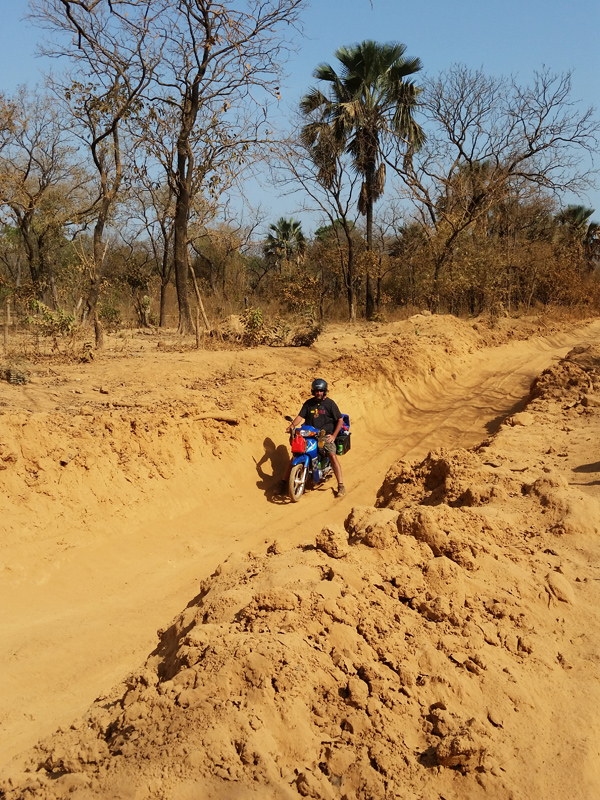
One thing is for sure, it is not a boring ride.
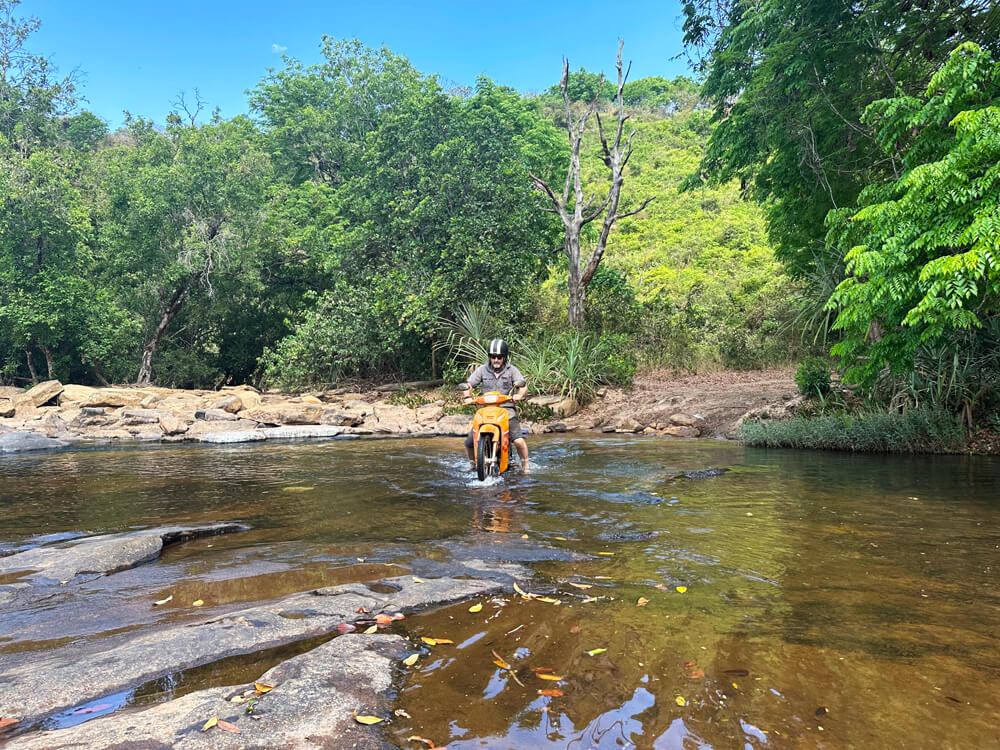
The Fouta Djallon
Alright, so it’s not an easy ride through the Highlands to the Fouta Djallon. But with challenges, come rewards.
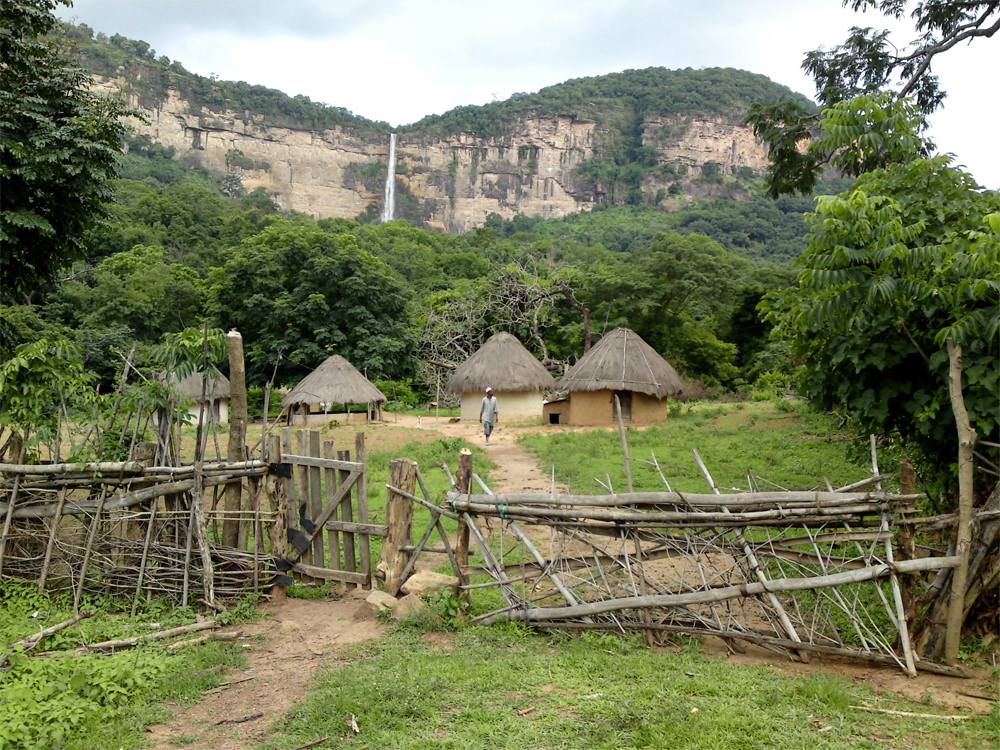
While most of West Africa is flat with occasional plateaus and low-grade hills, the Fouta has mountains and gorges carved up by rivers and towering waterfalls. There is jungle thick enough to blot out the sun, with strangler figs climbing up centuries old trees, and sweeping vistas above the tree-line offering views of the lower altitude plains that lie to the north.
Known as the Water Tower of West Africa, the Fouta Djallon is home to the headwaters of the Niger, Senegal and Gambia rivers — essentially all of the great rivers of West Africa. Without the Fouta, it is hard to imagine the unique ecosystems of the Sahel and the subtropical forest regions, not to mention the widespread human settlement of West Africa that we see today.
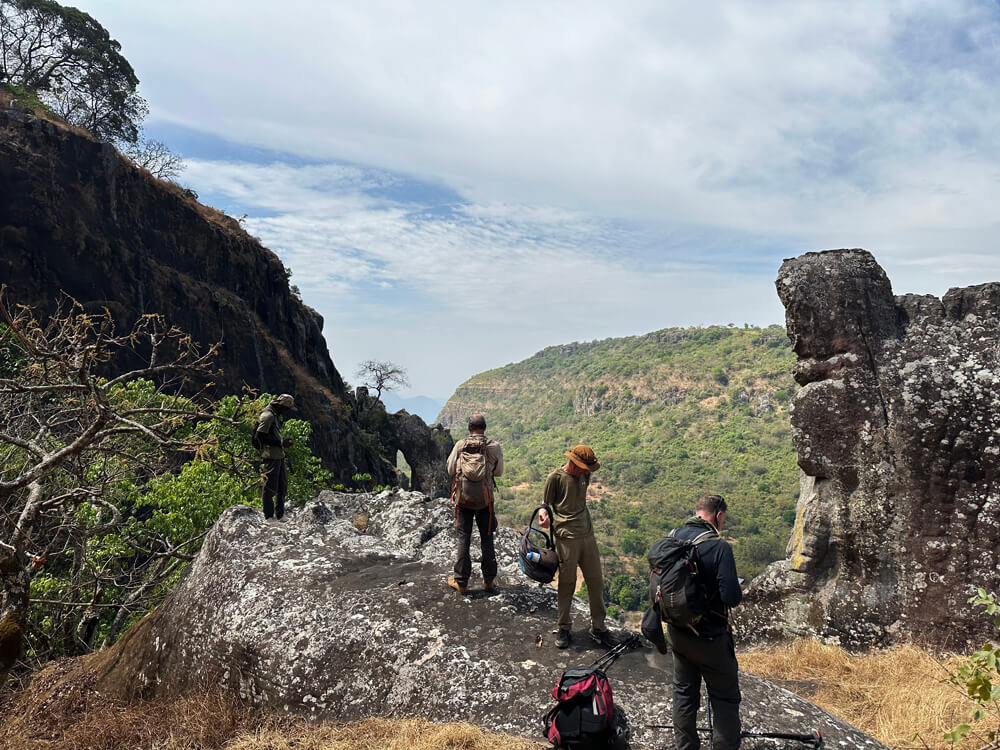
We will make our way to the village of Doucki, where we will stay with Hassan Bah, a legend in the world of West Africa adventure travel. We will give the bikes a deserved rest here as we do a bit of trekking. Hassan Bah has curated a variety of local hikes, with names like “Indiana Jones,” “Wet and Wild,” and “Chutes and Ladders.”
Exploring the dramatic natural landscapes is the obvious highlight here, but we will also be able to discover the local Fulani culture. Before the French arrived, the Fouta Djallon was a Fulani state and many still consider it to be a kind of cultural capital.
The hikes range in difficulty from leisurely walks through small Fulani villages where coffee grows alongside papaya, to more challenging treks down into the valleys. Participation is voluntary and we can suggest other activities if walking through astonishing natural landscapes is not your thing.
Continuing into Senegal
After a few days in the Fouta, we will head to Labe, the regional capital, where showers and cold beverages will be in order. We will recharge our batteries (in the literal and figurative sense) before we get ready to ride into Senegal.
The terrain will be far different than what we came across in the south. Northern Guinea and southeastern Senegal tap into the Sahel, a band of semi-arid land in between the tropics and the Sahara. The kapok trees will be replaced by acacias, mango trees and baobabs, and grassy scrublands will stretch for miles in all directions as we go down in altitude.
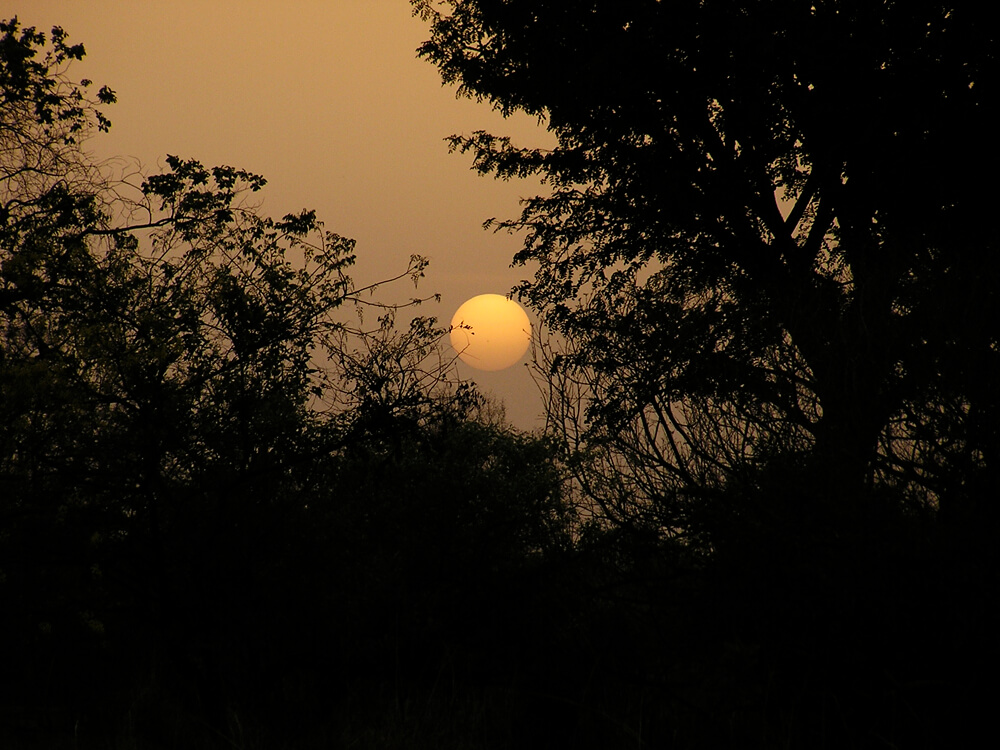
After crossing the border, we will make our way to a bush camp that will border Senegal’s Niokolo Koba National Park. We will have a chance to see monkeys, bushbucks and warthogs (hopefully not in our camp) as we make our way through backroads that see little in the way of car traffic.
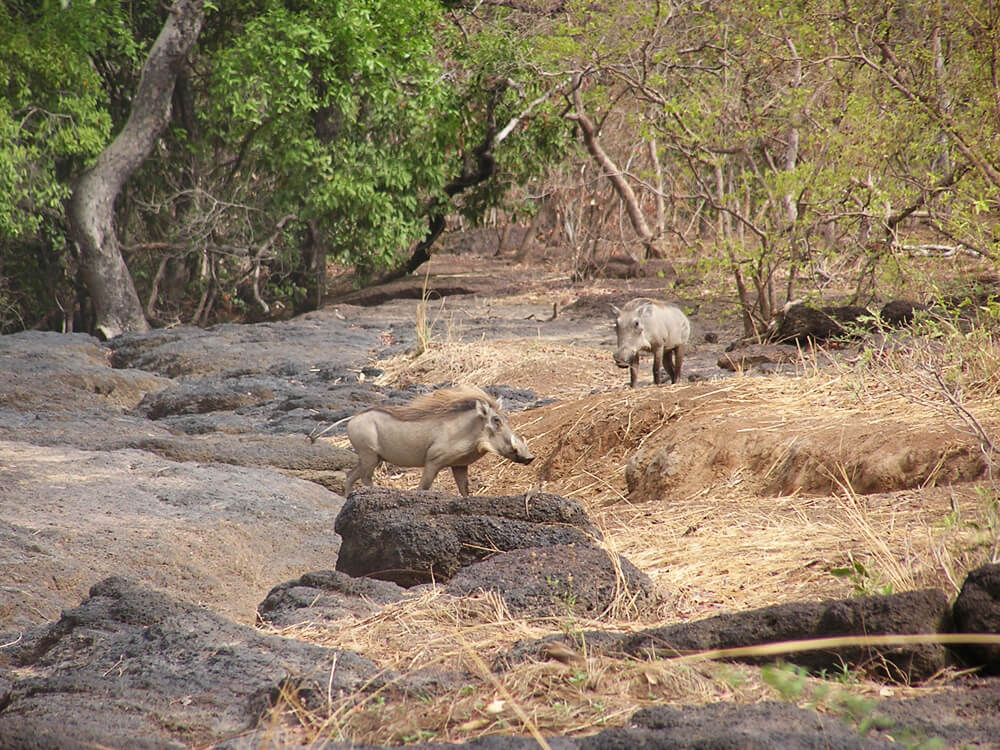
Crossing into The Gambia
We will enter The Gambia in the far eastern corner and travel the length of Africa’s smallest country as we gradually make our way back towards the Atlantic. On the way, we will be able to explore the Gambia River and spend time with a habituated population of chimpanzees that live on an island.
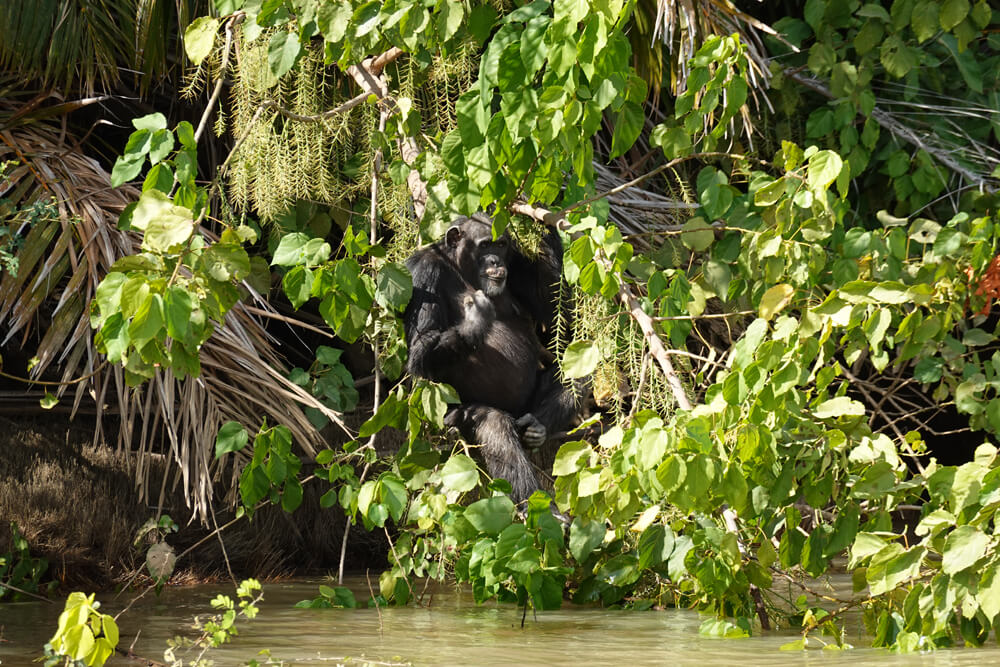
This part of the country sees few tourists and the roads don’t see much action either. Exactly how we like it.
Back into Senegal for the Finish Line
We will dip back into Senegal for one final stretch of riding, taking the bikes home as we head towards the Petite-Cote. We will end the trip on the beach in a laid back village not far from the Dakar airport.
Once we arrive in Toubab Dialaw we will likely have enough travel tales to fill a not-so-small novel. There will be some well deserved drinks and inevitably some nostalgia for the bush tracks we have left behind. Saying goodbye won’t be easy, but we will do it in style, with one more sunset — this time looking out into the Atlantic.
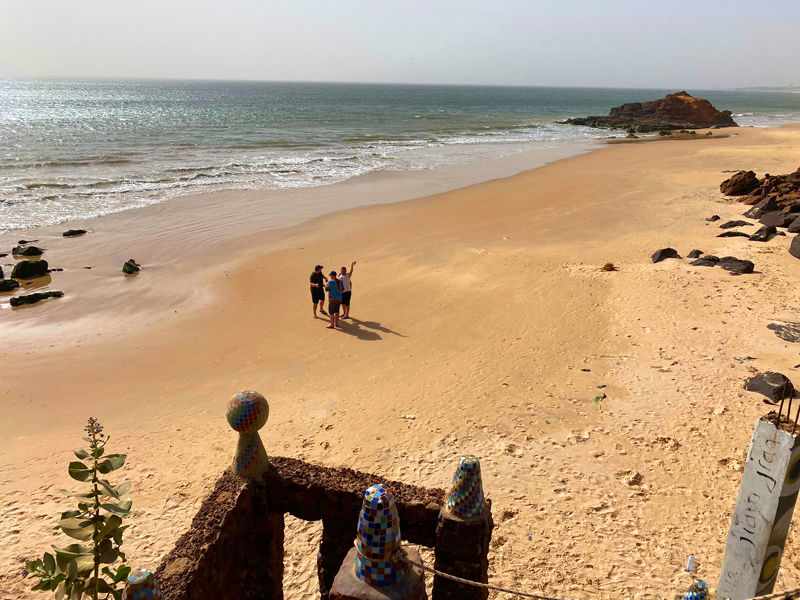
What to Expect
From November through February the weather is fairly consistent: lots of sun, a dry heat with daytime highs around 33°C (92 °F), and evenings and mornings that can be quite cool, dare we say cold. In mid-February-March, the temperature will begin to pick up. The higher altitude of the Fouta Djallon will mitigate the temperature a bit, but make no mistake, it will be hot.
Please have a look at the What to Pack page for tips on clothing and sun protection.
We will be spending time in French and Portuguese speaking countries. Don’t speak French or Portuguese? Don’t worry. Many people speak at least a bit of English, and even if you do get stuck, a trip leader will always be close by. Anyway, those are just the official languages. You will also have a chance to learn some local languages, such as Wolof, Diola, Creole and Fula.
This trip is an expedition. A proper adventure. If you need certain creature comforts – or any creature comforts, really – this may not be the trip for you.
Wherever possible, we will stay at hotels and guesthouse that introduce us to the local community. We will always choose a family run place over a chain hotel. This trip will have a mix of eco-lodges, hotels/guesthouses and bush camps. At the eco-lodges, facilities will be limited but the lodging still clean and comfortable. The hotels will have regular toilets, showers, fans and air-conditioning where possible. The bush camps, are… bush camps.
Speaking of bush camps, there will be bush camps on this trip. We may be able to provide a certain amount of camping equipment. We will let you know in our pre-trip correspondence what gear you need to bring.
The riding on this trip ranges from moderate to difficult. Some of the roads are in good shape, but don’t count on a lot of tarmac. In Southern Guinea-Bissau and the Highlands of Guinea, the terrain is significantly more challenging than that of almost any other trip we offer. We will take it slow and take in the scenery, but it is important for us to clearly state that if you are not open-minded, adventurous, and an experienced rider, this is not the trip for you.
On the first day of the trip we will have an orientation with the bikes to get comfortable with them. While we will offer plenty of guidance, you need to be able to handle yourself on a bike. We will have specific meet-up points throughout the day, but we will not necessarily be riding in a group at all times on this expedition. The ability to follow instructions and to travel with a group as well as independently are paramount skills for this trip.
To go on this trip, you must have a driver’s license, and you need to have a DOT or ECE 22.05 certified helmet (more on this on the Health and Safety and What to Pack pages).
This will be a culinary adventure. To start with, we will be cooking many of our meals ourselves. We will shop in the local markets and pair local foods with tinned items we pick up in boutiques and the occasional supermarket. When not preparing our own food, we will have plenty of chances to sample the local cuisine. Both Guinea-Bissau and Guinea have a variety of local specialties, and in the Fouta Djallon we will also have access to heaps of fresh fruit, avocado and locally grown coffee.
When we dine at local eateries, the food will be prepared to order with fresh local ingredients. At times, we will not be able to choose the meal. Vegetarian and vegan options are often limited, but we can accommodate you provided you notify us in advance of the trip.
Plan to arrive in Bissau the day before the trip begins at the latest. For your return flight, you can plan to book it no earlier than the evening of the 24th of January from the Dakar Airport (DSS).
As far as the trip itinerary itself: if you are expecting a by-the-minute schedule that will be respected to the letter, this is not the trip for you. West Africa is a great place for honing your patience and learning how to improvise. It’s important to keep an open mind and be ready for anything. If you have the right attitude, you will learn to love the different challenges that may arise. For more on this, please read about us and our philosophy on itineraries.
Available Dates
Cost and Booking Information
The trip cost is €2800. This cost is based on double occupancy lodging. For a single room, there is an additional €150 supplement. To secure your spot on the trip, we take a non-refundable deposit of €250. If you are unable to make it on the trip, you can use this deposit towards a future trip at a later date.
As stated above, the trip cost includes all lodging, transport, and a certain number of group meals during the trip. It does not include airfare, visas, optional activities, drinks, and food outside of the group meal.
If a trip has open spots, we will accept bookings up until departure. For trips that are full, we expect trip payment no later than two months before the trip starts. Please see our page on trip policies and cancellations.
